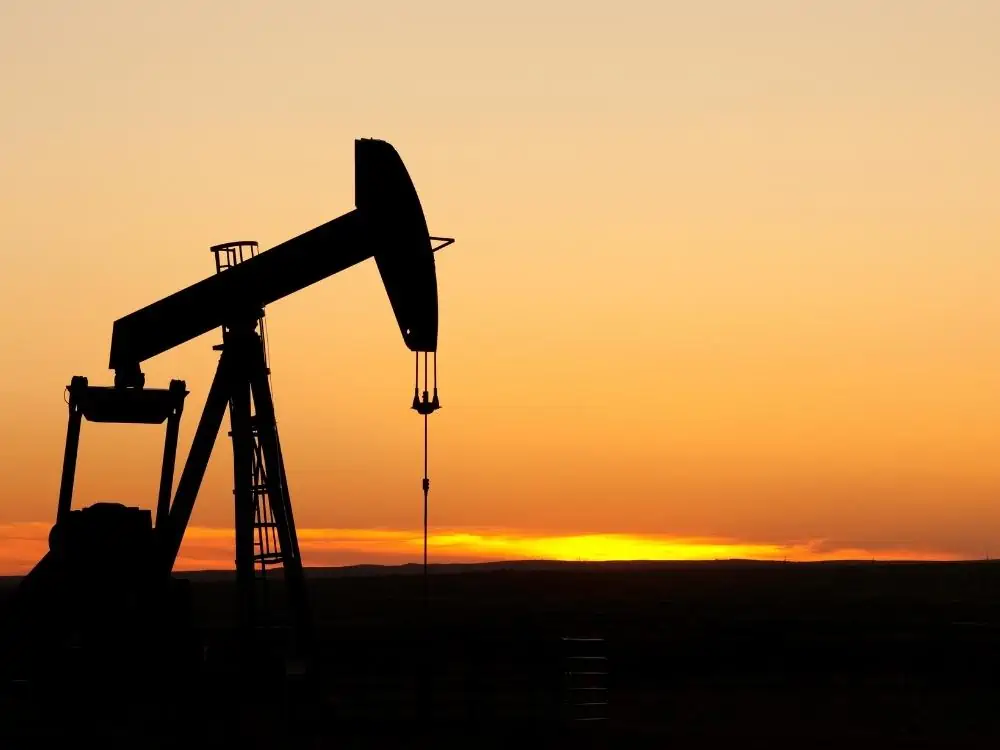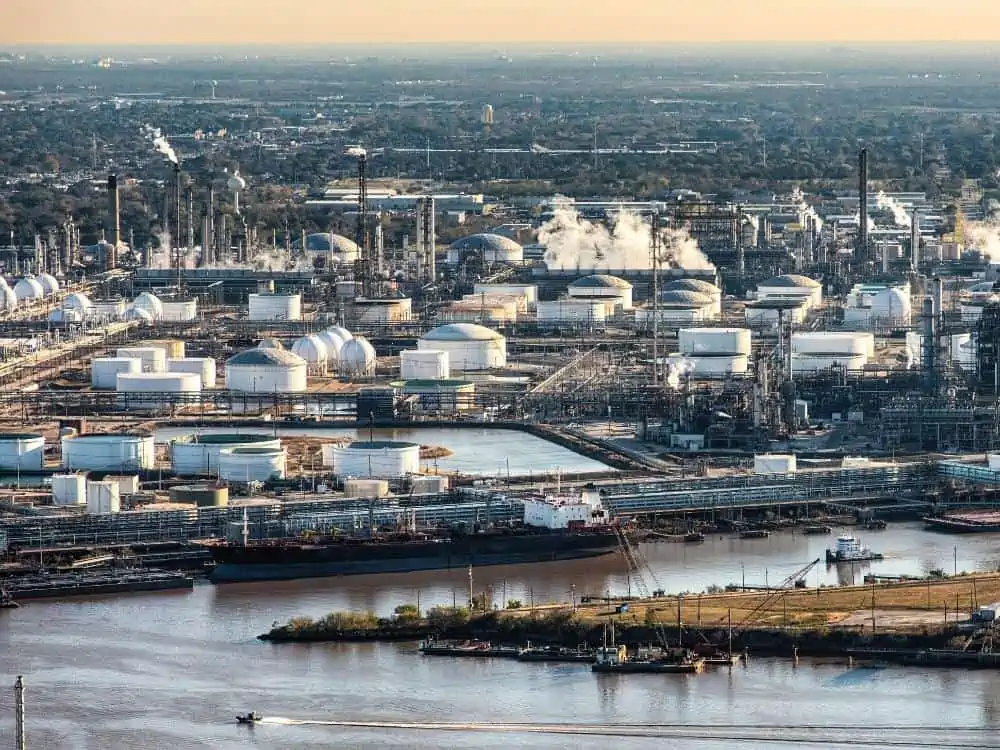Share the post "Beneath the Surface: Uncovering Texas’ Oil"
It’s often said that everything is bigger in Texas, including the sky. Texas is known for many things: everything from cowboys, Texas Rangers, and the Lone Star Flag to cattle, ranches, and inclement weather. It’s a big state with a lot of personalities.
There was a time when Texas produced more oil and natural gas than any country worldwide. The bigness of Texas stretches to the crude oil supply. Of the two largest oilfields in the world, one exists in Texas, which is why Texas has so much oil. Saudi Arabia contains the other largest oilfield.
In this article, we’ll examine the oil supply in Texas, as well as other common questions that come up on the subject. We will look at how Texas became known as an oil country and what Texas cities are built on the oil industry.

Why Does Texas Have So Much Oil?
Texas has so much oil because the largest oil-producing region in the world is Texas. The Permian Basin sits in west Texas and southeast New Mexico, part of the famed Mid-Continent Oil Producing Area.
There are many smaller component pieces contained within the Permian Basin, including:
- Midland Basin
- Delaware Basin
- Hovey Channel
- Central Basin Platform
- Horseshoe Atoll
- Marfa Basin
- Eastern & Northwest Shelves
- San Simon Channel
- Sheffield Channel
The Permian Basin is the largest petroleum-producing basin in the United States. The Ghawar oilfield in Saudi Arabia is the biggest in the world.
Although the Ghawar is the largest oilfield in the world, the Permian Basin became the world’s top oil producer for a time in 2019.
The Permian Basin is known for its vast natural resources, including more than just petroleum. It has rich natural gas and potassium deposits as well.
The Long Oil History in Texas
The oil industry in Texas dates back to the sixteenth century. Local Native American tribes discovered oil in Texas soil, and there’s historical evidence of early European settlers using crude oil near the Sabine Pass on the DeSoto Expedition.
In the mid-1800s, drilled oil became a feature of the Texas economy. Small oil wells continued to pop up throughout the state into the late 1800s until the first effective refinery was built in 1898.
The early 1900s saw the oil industry in Texas continue to grow significantly. Oilfields were discovered all over the state, leading to an increased interest in oil production and refining.
| OILFIELD | LOCATION | DISCOVERED |
| Powell Field | Corsicana | 1900 |
| Spindletop | Beaumont | 1901 |
| Goose Creek Field | Galveston Bay | 1908 |
| Electra Field | Wichita County | 1911 |
| Damon Mound | Brazoria County | 1915 |
| Barbers Hill | Chambers County | 1916 |
| Ranger Field | Eastland County | 1917 |
| Blue Ridge | Fort Bend County | 1919 |
| Mexia Field | Limestone County | 1920 |
| Luling Field | Caldwell County | 1922 |
| East Texas Field | Turnertown & Joinerville | 1930 |
| Duggan Field | Cochran County | 1936 |
We have only a small picture of how many oilfields were discovered and opened around Texas in the early 1900s. Companies developed around oil production in Texas.
This period is referred to as the Texas oil boom or the gusher age and led to a significant increase in economic growth for Texas.
Oil Towns in Texas
Texas is home to various oil towns scattered around the state. Although the Permian Basin is the largest supply of petroleum and natural gas, other reservoirs exist in other parts of the state.
Midland, Texas, has the most oil in Texas. It sits on the Permian Basin in West Texas, between Odessa and Big Spring. It’s home to a well-known petroleum museum and relies on oil production to maintain its economy.
Other towns in Texas knowns for the oil industry include:
- Houston
- Austin
- Dallas
- San Antonio
- Odessa
- Freeport
- Kilgore
- Port Arthur
- Corpus Christi
- El Paso

The Most Oil in the United States
Texas produces the most oil out of all the states in North America. It even has more oil than the entire country of Canada.
In 2019, Texas produced 5,070,450 barrels of crude oil per day. In 2021, Texas accounted for 43% of the United States’ oil production. It has more oil refineries than any other state and produces more electricity than any other state.
Texas produces the most oil of any other state. The following nine in terms of crude oil production include:
- North Dakota
- New Mexico
- Colorado
- Alaska
- California
- Wyoming
- Kansas
- Louisiana
- Utah
While many American states produce at least some amount of oil, several states produce no oil at all. Some of those states include:
- Iowa
- Maine
- New Hampshire
- North Carolina
- Hawaii
- Vermont
Oil FAQ
So why is there so much oil in Texas? It’s mainly because Texas has one of the largest oilfields in the world.
Now that we know more about oil production and Texas and why the state has so much oil, let’s look at some of the frequently asked questions relating to Texas’s oil industry.
Is there any oil left in Texas?
There is a lot of oil left in Texas. Some studies show that oil from the Permian Basin alone will last up to 2050. Other oil reserves in Texas are also full of oil.
Running out of oil in Texas is not a pressing issue for the oil industry.
Does every state have oil?
Not every state produces oil or natural gas. However, over half of the United States does have oil wells. At least 32 states produce oil in some capacity. The state with the smallest production as of 2020 was Virginia.
Many states produce no oil. Connecticut, Georgia, and Minnesota are examples of such states. Similarly, South Carolina and Massachusetts have no oil.
Which state has the most oil?
Texas has more oil in its basins and reserves than the rest of the country. It also produces more oil than any other state in the United States, with 27 refineries leading oil production.
On average, Texas produces almost 30% of the nation’s total oil capacity.
What country has the most oil?
Regarding oil reserves, the country with the most is Venezuela. Saudi Arabia comes in second, and Canada is third.
However, the United States leads the rest of the world regarding oil production. Russia is a close second, and Saudi Arabia is third.
References:
- https://www.investopedia.com/articles/investing/112415/biggest-oil-towns-texas.asp
- https://www.timesrecordnews.com/story/opinion/2019/07/13/texas-producing-more-oil-natural-gas-than-rest-world/1708232001/
- https://gov.texas.gov/uploads/files/business/petroleum-snapshot.pdf
Share the post "Beneath the Surface: Uncovering Texas’ Oil"
Christian Linden is a seasoned writer and contributor at Texas View, specializing in topics that resonate with the Texan community. With over a decade of experience in journalism, Christian brings a wealth of knowledge in local politics, culture, and lifestyle. He holds a Bachelor's degree in Communications from the University of Texas. When he's not writing, Christian enjoys spending weekends traveling across Texas with his family, exploring everything from bustling cities to serene landscapes.











